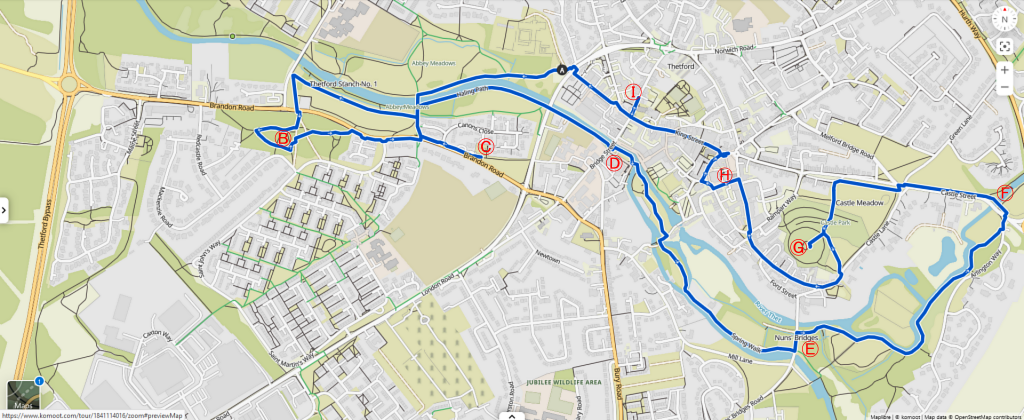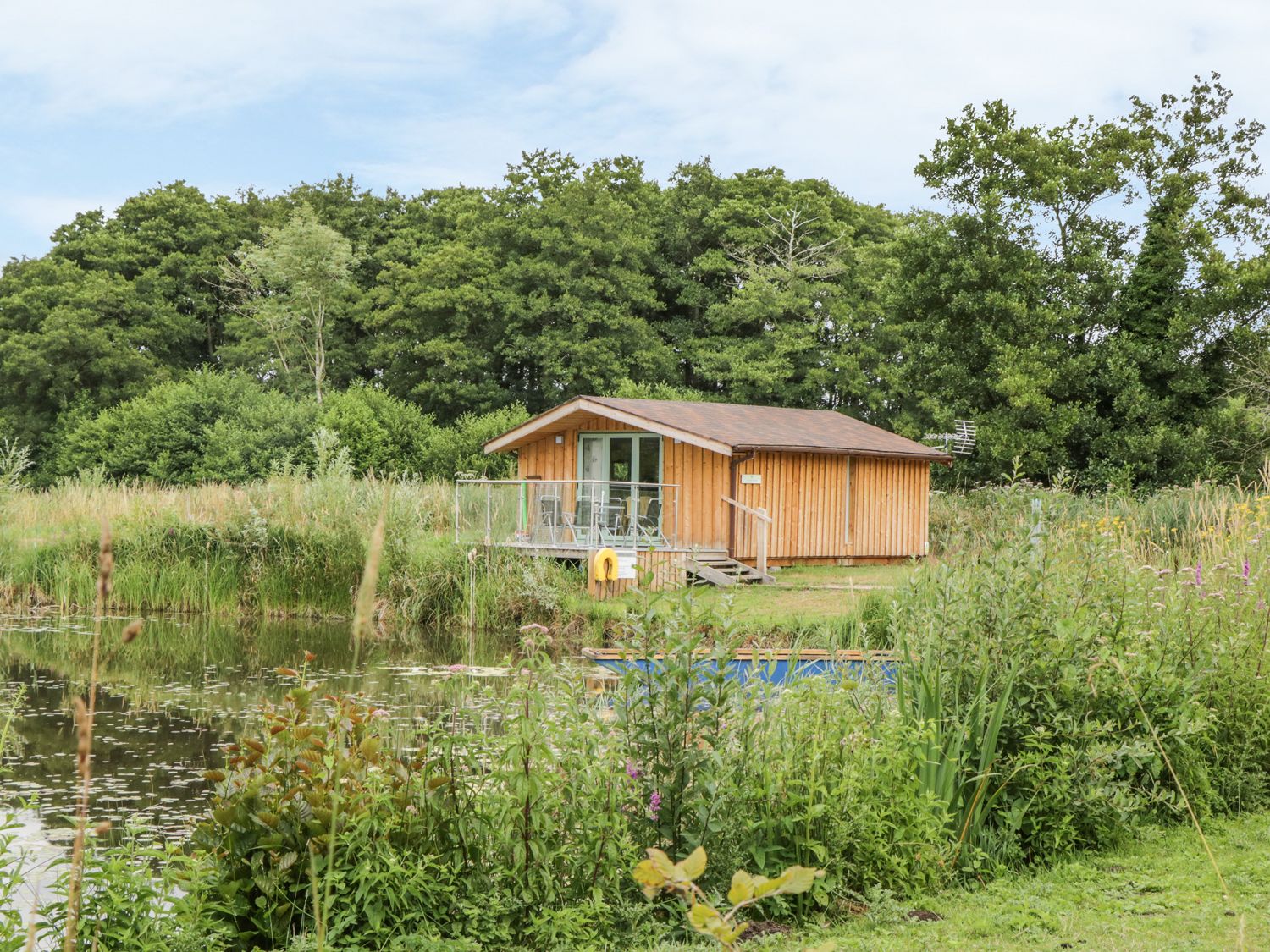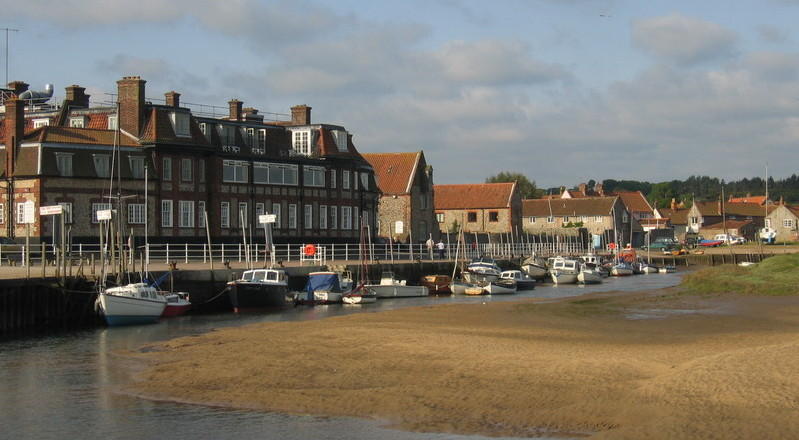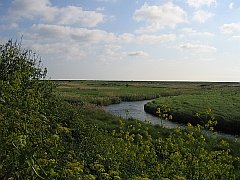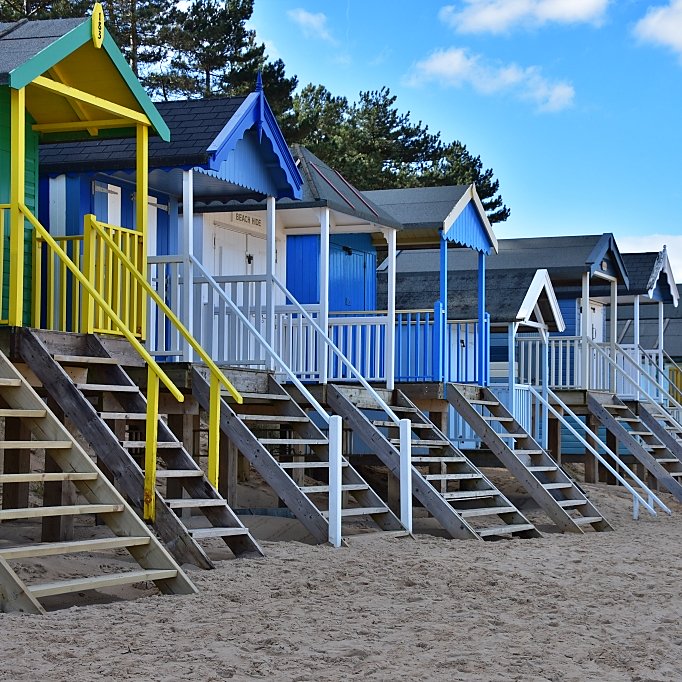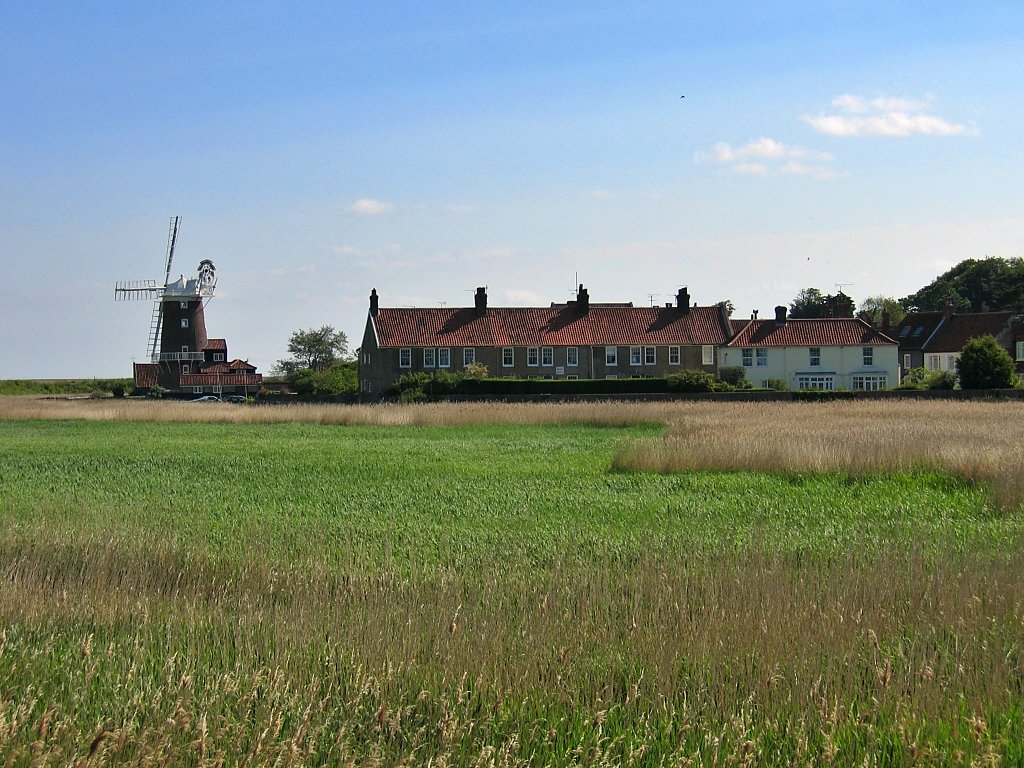Thetford
The Old Capital Of East Anglia
Thetford is a historic market town in southern Norfolk, close to the Suffolk boarder. In the Domesday Book of 1086, Thetford is quoted as having a population of around 4,500 people - which made it the sixth largest town in England at that time. The town clearly flourished, with two castles and one of Norfolk’s most important religious monasteries built there during the Norman period. However, as we found out during our visit, there’s a lot more history to be found in Thetford and we ended up spending much longer than we'd expected to. Plus, we unknowingly arrived during the Summer Festival and its Continental Street Market, which added to the interest.
As we had so much planned for our day out, I had put a little thought into our tour and came up with a list of things to see which included Thetford Priory, the Red Castle, the Church of the Holy Sepulchre, the Town Bridge and Captain Mainwaring Statue, Nuns Bridge, Melford Bridge, Thetford Castle Mound, the Dad’s Army Museum, and the Ancient House. I created a walking route of around four miles that took in these sites, and many others not on my list, and had a lovely riverside section for relaxation. In fact, whilst walking, we found out that there is a Thetford Heritage Trail which has information boards and plaques on buildings.
The Thetford Heritage Trail highlights over 2,000 years of history, which the town council have summarised as a list on the trail’s information boards. I’ve tried to accurately copy their words into the table below as it demonstrates the historical importance of Thetford.
|
500 BC |
Iron Age fort built at the river crossing on the route of the Icknield Way. |
|
AD 40s |
Tribal centre of Iceni established at Gallows Hill, north of town. Romans invade Britain AD43. |
|
AD 60s |
Boudica’s revolt against the Romans. Gallows Hill destroyed. |
|
380-390s |
Thetford Treasure buried at Gallows Hill near Roman Temple. |
|
410-600s |
Britain no longer part of Roman Empire. Angles and Saxons settle on south side of river. |
|
869-870 |
Danish (Viking) raiding army take up winter quarters in Thetford. East Anglia under Viking control for 50 years. |
|
880-900s |
Thetford a major trading centre minting its own coins. Town defended by a rampart and ditch. |
|
1004 |
Town raided by King Swein Forkbeard of Denmark. |
|
1010 |
King Swein’s army returns and burns the town. |
|
1066 |
At the time of the Norman Conquest Thetford ranked sixth in size amongst English towns. |
|
1070s |
Norman castle built. The bishopric of East Anglia moves to Thetford. |
|
1104 |
Cluniac Priory of St. Mary established in town. |
|
1199 |
First mayor of Thetford takes civic office. |
|
1133-1154 |
Town’s defences extended. Red Castle built. |
|
1156 |
Thetford dropped from the list of important English towns. |
|
1200-1400s |
Thetford becomes a centre of pilgrimage. Five religious houses in town dominate the local economy. |
|
1530s-1540s |
Dissolution of the monasteries. The religious houses fall into ruin. |
|
1600s-1700s |
Thetford known for its electoral malpractices. |
|
1750s-1770s |
The town begins to revive. New industries develop. |
|
1797 |
Thomas Paine, influential political writer, born in the town. |
|
1819 |
Thetford Health Spa established. |
|
1845 |
Railway line to London opens. |
|
1850-1928 |
Thetford a thriving industrial town. |
|
1911 |
Area starts to be used for military training. Flying begins at Snarehill airfield. |
|
1920s |
Forestry Commission starts to plant pine trees to create Thetford Forest. |
|
1950s |
Start of scheme to bring 10,000 people from London to live in town. |
|
1999 |
Thetford celebrated the 800th anniversary of the appointment of its first town mayor. |
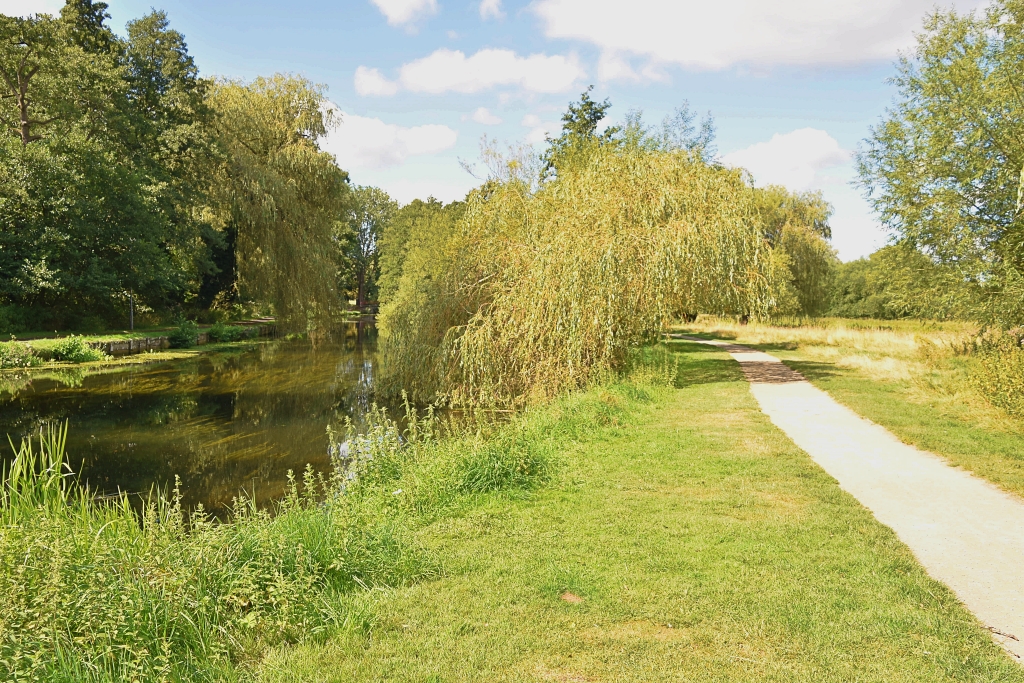 Walking Through Abbey Meadows Towards Red Castle © essentially-england.com
Walking Through Abbey Meadows Towards Red Castle © essentially-england.com
Highlights of our Thetford Tour
Our route around Thetford started from the Priory where there is a small carpark at the end of Water Lane (use postcode IP24 1BB to help guide you).
If you would like to download a gpx file, or if a komoot.com user, follow our route on your mobile device, then please click on the map link.
A) Start/Finish Point and Thetford Priory
Thetford Priory, or the Cluniac Priory of Our Lady of Thetford, was established by Roger Bigod, a supporter of William the Conqueror, in 1104. This grand Benedictine monastery became one of the wealthiest religious houses in East Anglia as it owned several holy relics that drew in the pilgrims. After the dissolution in 1540, the prior’s lodging continued to be used as a home while many of the other priory buildings fell into ruin. During the 19th century, Abbey House was constructed just beyond the prior’s lodging and the priory was left as a romantic ruin in its grounds. The 14th century gatehouse still survives, but this was under conservation during our visit in August 2024.
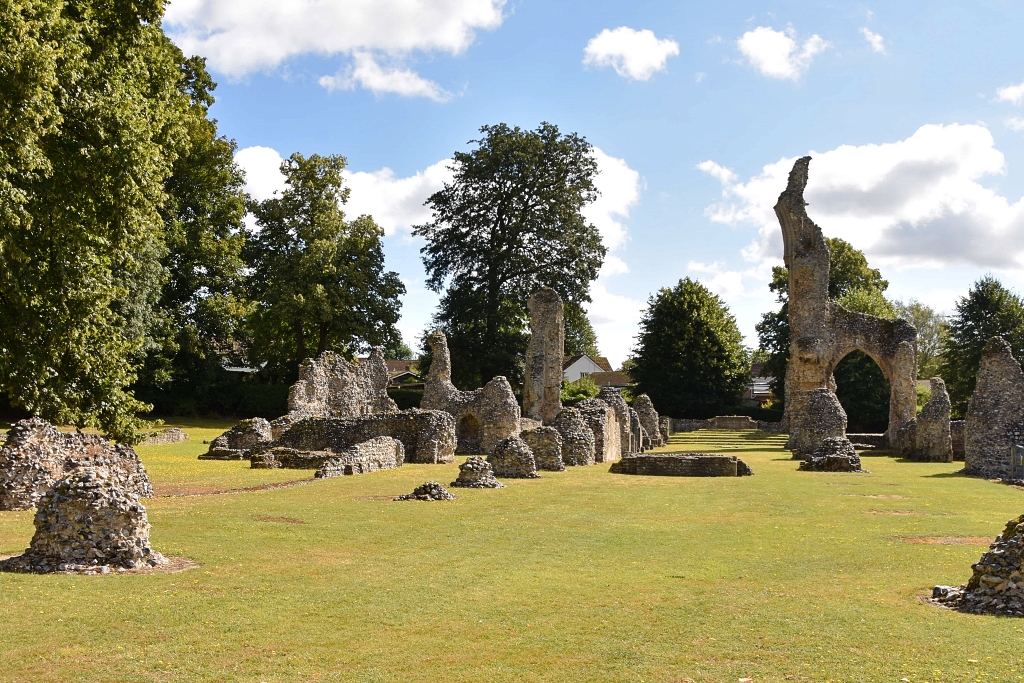 Thetford Priory Church Ruins © essentially-england.com
Thetford Priory Church Ruins © essentially-england.com
B) Red Castle
Red Castle was the second castle built in Thetford. There’s no real clear reason why two castles were required, but maybe it shows how important the town of Thetford was during the Norman period.
My internet search didn’t find out much about Red Castle, so this was a mission of ours to see if we could locate any sign of a castle. We walked around the woods and found some earthworks in the right sort of position, but there was nothing to tell us if they belonged to the castle.
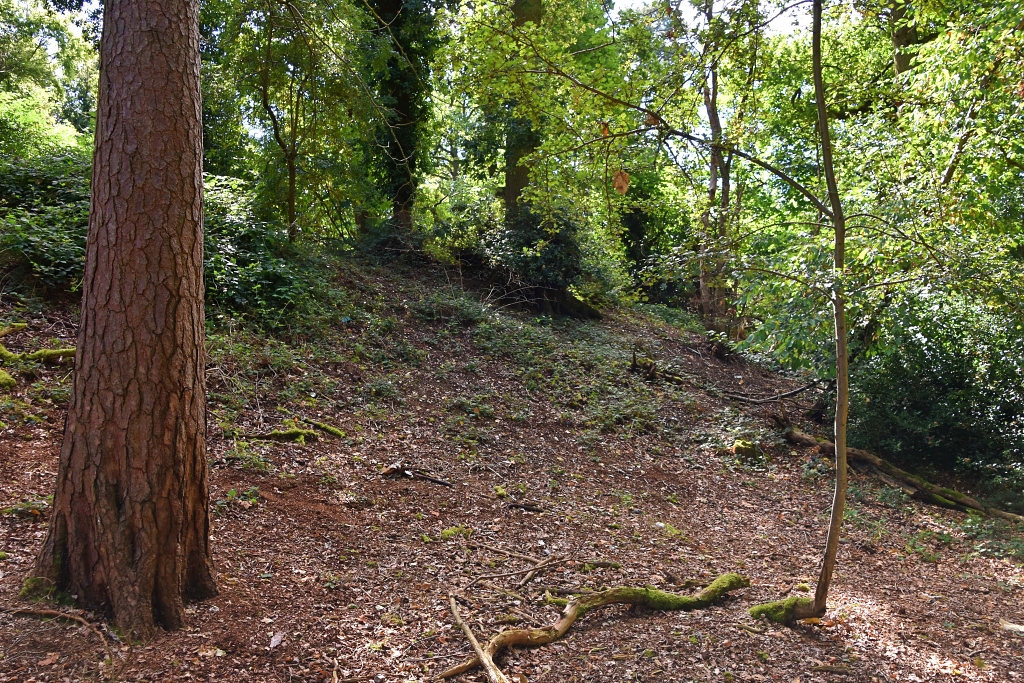 Is this Bank Part of the Red Castle Earthworks? © essentially-england.com
Is this Bank Part of the Red Castle Earthworks? © essentially-england.com
C)
Church of the Holy Sepulchre
The ruins of the Church of the Holy Sepulchre were part of the Priory of the Holy Sepulchre which was founded in 1146 by the Earl of Surrey, William (III) de Warenne, after he “took the cross” to join the Second Crusade. All that remains of the church is the nave which was the western arm of the cross shaped church.
When we visited in August 2024 the site was closed for restoration work.
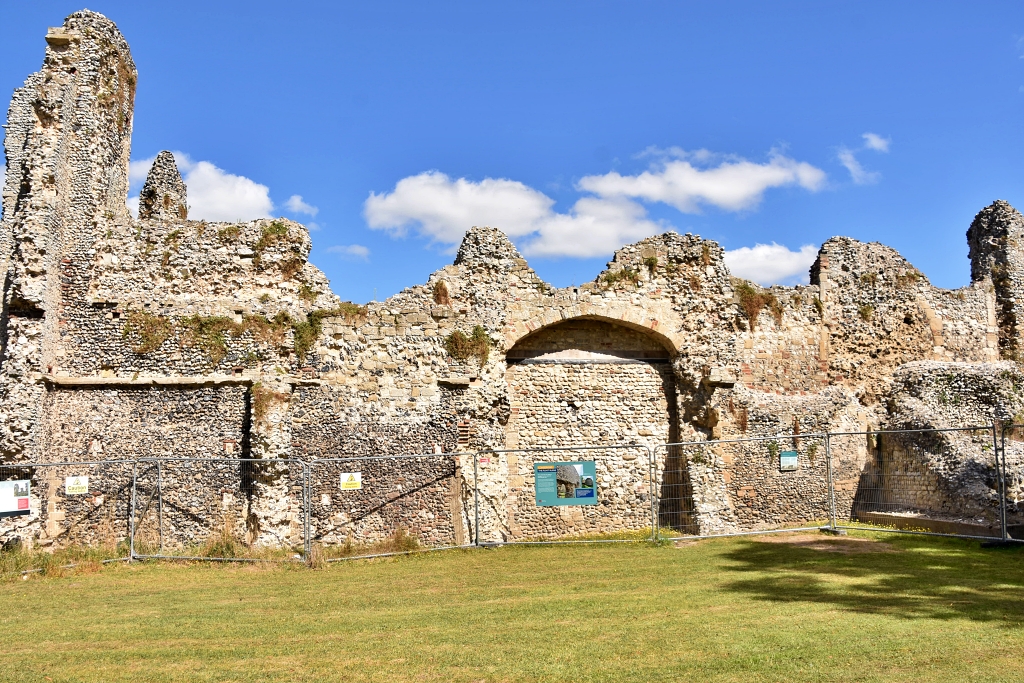 Church of the Holy Sepulchre © essentially-england.com
Church of the Holy Sepulchre © essentially-england.com
D) Town Bridge and Captain Mainwaring Statue
The colourfully painted cast-iron Town Bridge dates to 1829. It was built by Thetford firm Burrell & Son who specialised in the manufacture of steam traction engines, some of which can be seen in the Charles Burrell Museum on Minstergate.
If you grew
up in the 1960s and 70s, then your Saturday evening entertainment on the
television was probably Dad’s Army. Much of the series was filmed around
Thetford and a statue of Captain Mainwaring sits on a bench beside the Town
Bridge. Probably his most famous line is “Don’t tell him, Pike”. I’ll let you
look up the reference on YouTube.
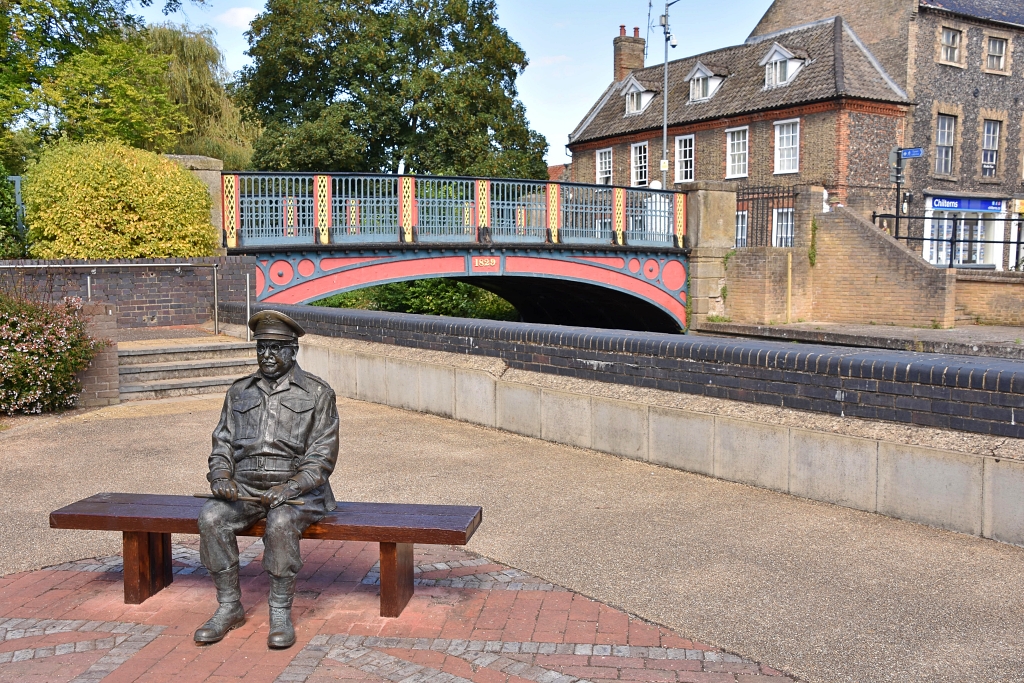 Town Bridge and the Captain Mainwaring Statue © essentially-england.com
Town Bridge and the Captain Mainwaring Statue © essentially-england.com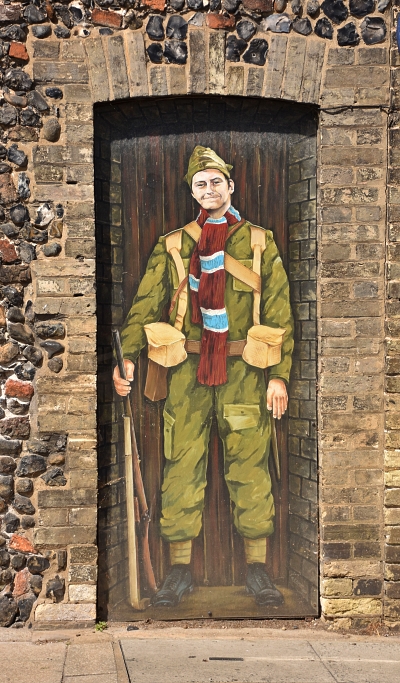 Private Pike Painting
Private Pike Painting © essentially-england.com
And talking of the devil, just across the bridge on a doorway next to the building with the blue shop front in the photo above we found, by chance, this wonderful image of Private Pike. If you look carefully at the Town Bridge photo, Pike's head is just visible between the railings. Later our route passes the Dad’s Army Museum.
E) Nuns Bridge
The three small bridges that cross the River Thet and the Little Ouse River get their name from the St. George nunnery which stood close by. Initially this crossing would have been a ford with the earliest recorded bridge being from the sixteenth century. The current bridges date from around 1800.
The road that crosses the Nun’s Bridges is part of the prehistoric Icknield Way route from southwest England to northwest Norfolk. This is one of the oldest trackways in Britain and this section may have been used by the “local” Iceni Iron Age tribe, Roman legions, raiding Viking armies, conquering Normans, medieval pilgrims, and second World War tanks, all crossed the river here. The tanks even leaving scrape marks along the stonework of one bridge!
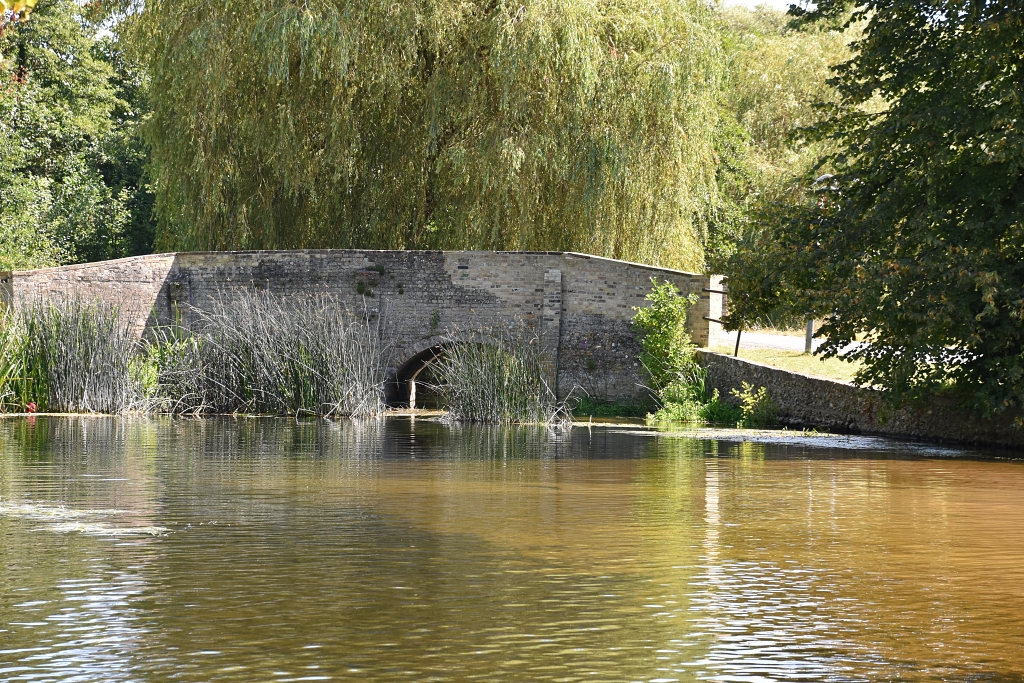 Nuns Bridge © essentially-england.com
Nuns Bridge © essentially-england.com
F) Melford Bridge
Grade II listed Melford Bridge was rebuilt in 1697 on a site that used to be a ford beside a watermill. On the north side of the bridge is a Latin inscription stating the rebuilding was funded by Sir John Wodehouse.
A new bridge taking Castle Street over the River Thet has been built alongside Melford Bridge for road traffic, while the old bridge is a footbridge only.
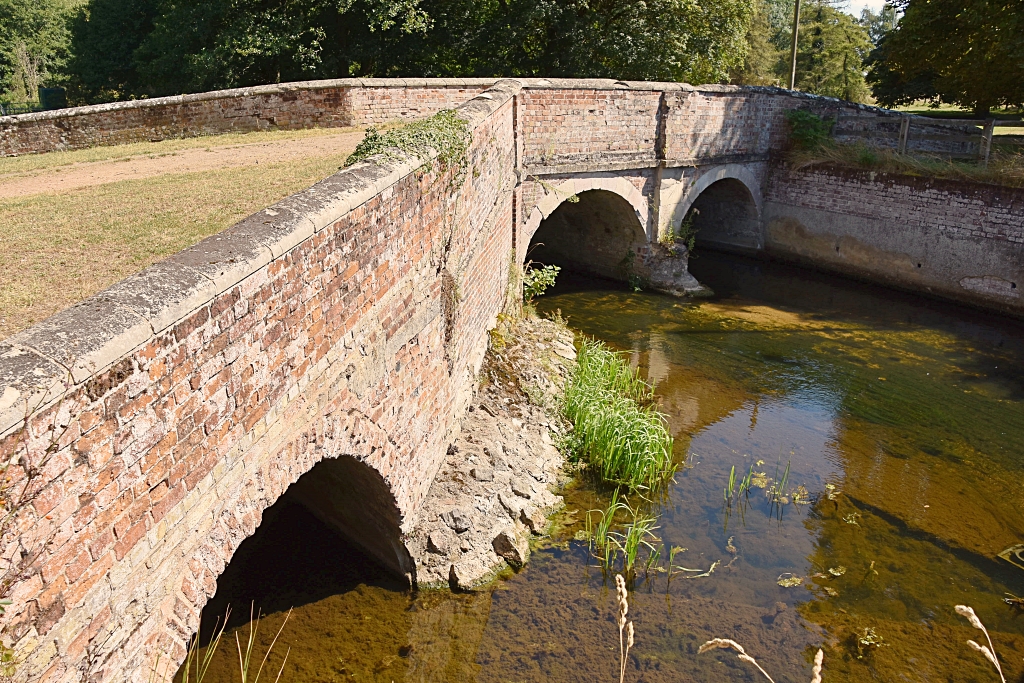 Melford Bridge © essentially-england.com
Melford Bridge © essentially-england.com
G) Thetford Castle Mound
The Normans built their first castle in Thetford within the dramatic banks and ditches made around 1,500 years earlier by the Iron Age Iceni tribe. The motte, or mound, is one of the tallest in England at around 80 feet high. On top of the mound would have been a wooden tower used as a lookout and as a last stand in case the defences were breached. The mound and ditches look very impressive and there’s a set of steps up the side of the mound for some fine views of the defences and surrounding countryside.
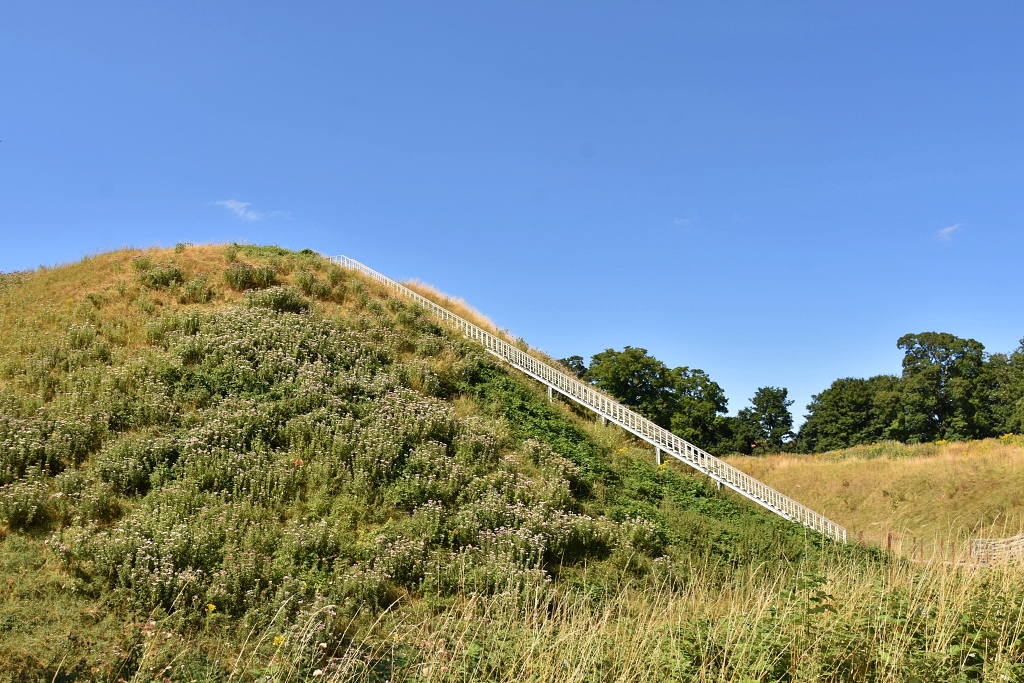 Thetford Castle Mound © essentially-england.com
Thetford Castle Mound © essentially-england.com
H) Dad's Army Museum
Dad’s Army was a television sitcom about the British Home Guard volunteers who were ineligible for military service during the Second World War. The series was based in an imaginary town called Walmington-on-Sea with much of the filming done in and around Thetford. The show ran from 1968 to 1977 with 80 episodes and one film in 1971.
The Dad’s Army Museum holds a collection of memorabilia from the Dad’s Army series and has a 1940’s style café selling traditional cakes and drinks. The museum building used to be Thetford’s fire station and was often used in the BBC series as the Walmington-on-Sea Town Hall. This small museum is run by knowledgeable volunteers and is only open on certain days. To avoid disappointment, check their website for more information on opening times and events.
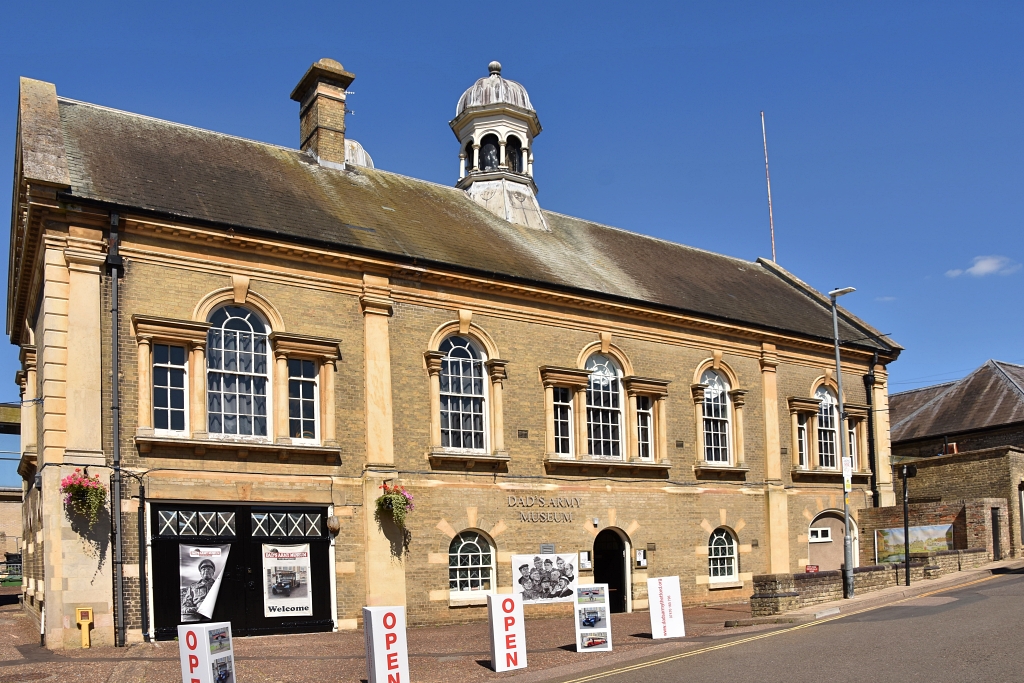 The Dad's Army Museum © essentially-england.com
The Dad's Army Museum © essentially-england.com
I) The Ancient House
The Ancient House is a museum that tells the history of Thetford and the surrounding area. The museum is located inside a beautifully example of an early Tudor house that was built for a wealthy merchant. The building is made from oak and wattle and daub and inside there are some lovely original features. The museum collection compliments the Thetford Heritage Trail and helps explain the town’s rich history.
For opening times and a list of events please visit the Ancient House Museum website.
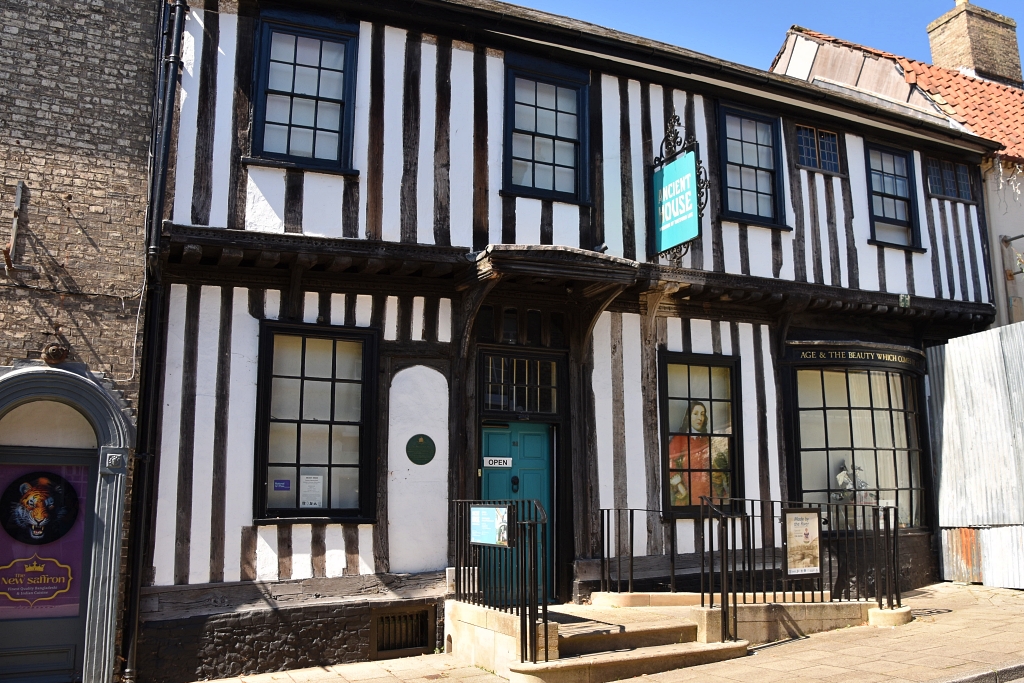 The Ancient House © essentially-england.com
The Ancient House © essentially-england.comWe had a fantastic time exploring Thetford and certainly didn’t realise that there was so much to discover. We were also lucky that it was festival time with lots of street food and entertainment around the Market Square and Kings Street. The riverside part of the walk was beautiful, and we even got to see a Kingfisher flying between perches.
Naturally, as we spent so much more time enjoying Thetford our plans for the day had to change and our next stop was the Desert Rats memorial in Thetford Forest which you can read about in our Tank in the Forest page.
Are You Planning a Holiday in Norfolk?
Where You Could Stay
Norfolk has no shortage of fabulous holiday accommodation whether you want to spend time on the beach, love boating or want to explore inland. You may covet a tiny fisherman's cottage like the one in Blakeney we kept returning to. You may like something larger and more modern like a loft overlooking the Norfolk Broads, or the right place for you may be a chic city apartment perfectly placed to explore Norwich...
To see other holiday cottages in Norfolk click here. Or check out holiday cottages in other parts of England by clicking here.
Or you could try a family orientated holiday resort in Lincolnshire as there's plenty of choice...
If you need to find a hotel, then try one of these search platforms...
What You Could See and Do
It's next to impossible to be bored in Norfolk, there's just so much to do and see. The list below includes some of our favourite places
- Explore Norwich with its shops and two cathedrals and pay a visit to Norwich Castle and its teapot museum.
- Visit Admiral Lord Nelson's birthplace at Burnham Thorpe and read the report of the Battle of Trafalgar in a copy of The Times from 1805
- Spend a day at Sandringham and Castle Rising Castle
- Take a ride on the Holt to Sheringham Railway and explore the beautiful little town of Holt and the seaside town of Sheringham
- Explore the ruins of Castle Acre and Castle Acre Priory
- Shop in Burnham Market
- Wander around the small town of Blakeney, explore the church and harbour before making an attempt to reach the seals at Blakeney Point
- Admire the famous windmill and go birdwatching in Cley-next-the-Sea
- Be wowed by the rhododendrons in Sheringham Park
- Visit Anne Boleyn's family home, Blickling Hall, or explore Oxburgh Hall, a fabulous manor house with a moat.
- Go wildlife spotting while walking through the Cley marshes from Blakeney
- Or even fish for crabs and wander along the famous pier at Cromer.
For more ideas try our Things to do in Norfolk page...
For more things to do in Norfolk return from our Thetford page to the Norfolk page.
